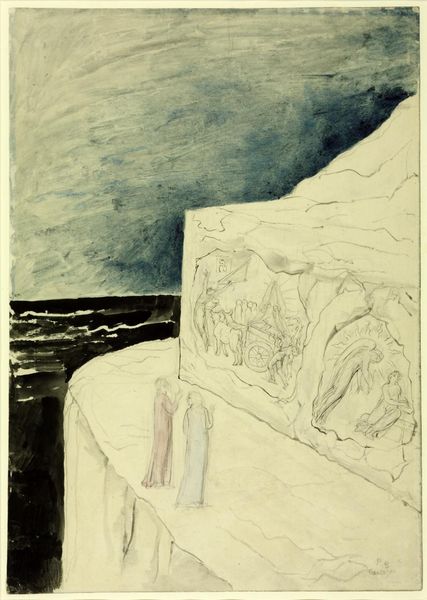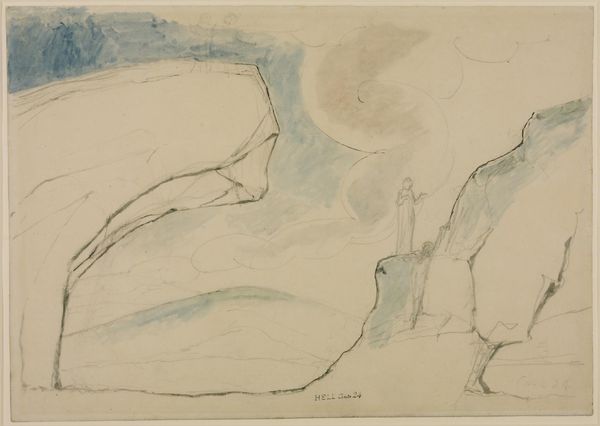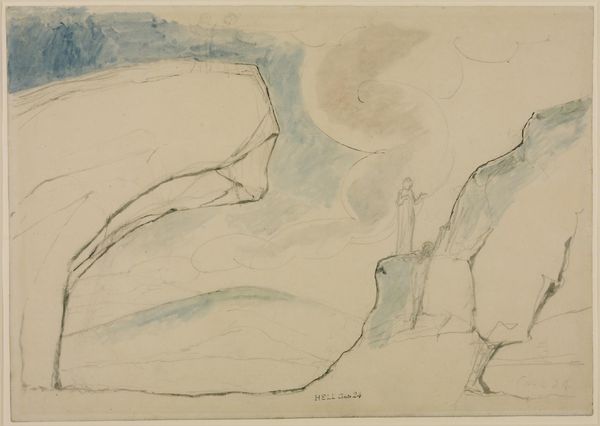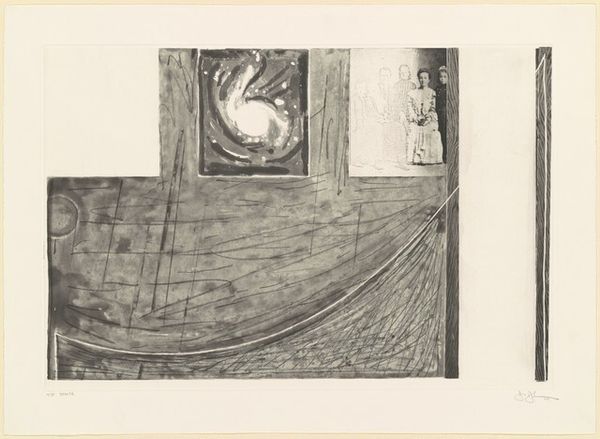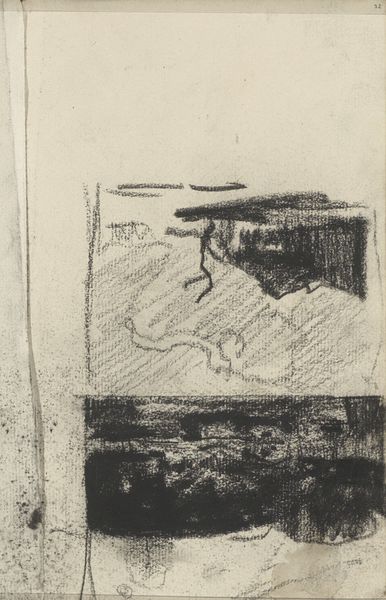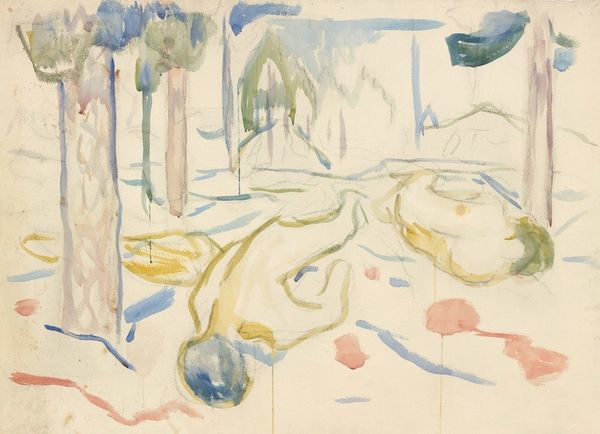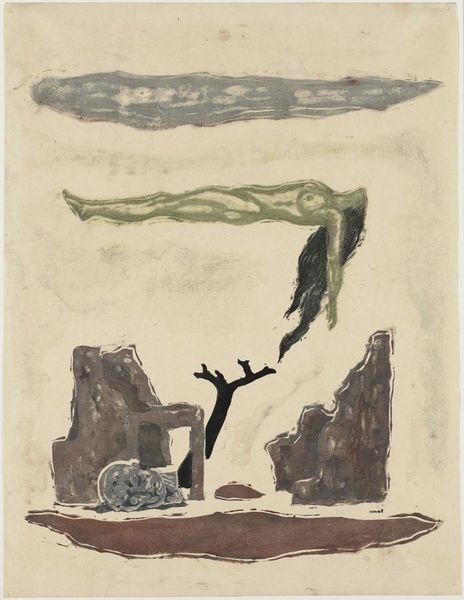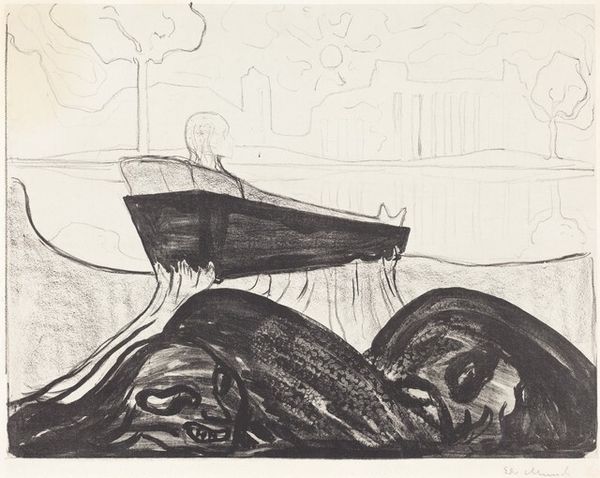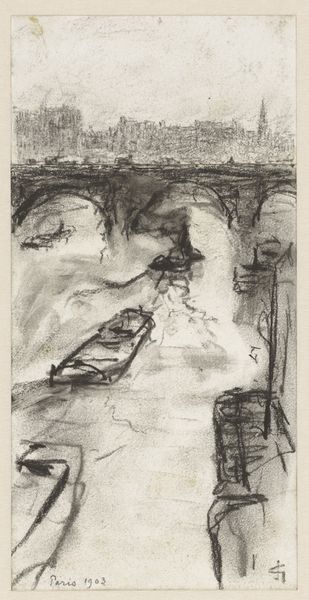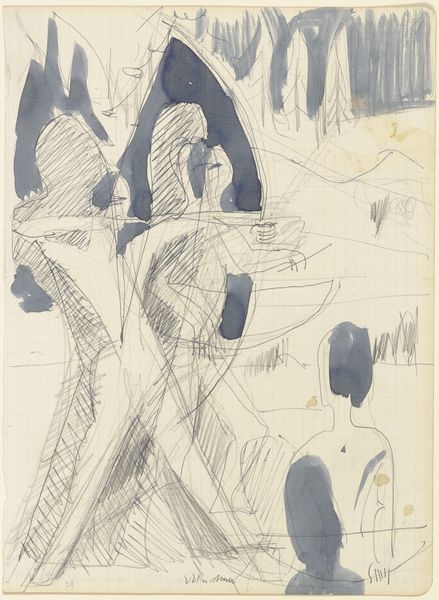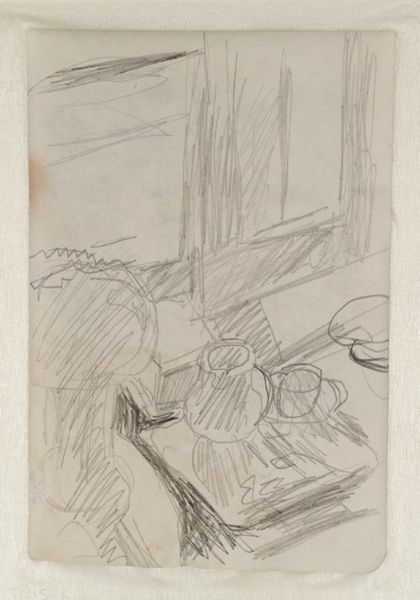
The Rock Sculptured with the Recovery of the Ark and the Annunciation 1824 - 1827
0:00
0:00
Dimensions: support: 528 x 374 mm
Copyright: CC-BY-NC-ND 4.0 DEED, Photo: Tate
Curator: William Blake's "The Rock Sculptured with the Recovery of the Ark and the Annunciation," held in the Tate Collections, presents a fascinating synthesis of biblical narratives within a visionary landscape. Editor: The somber wash of blues and blacks evokes a primal scene. Its monumental scale and stark color palette creates a sense of awe. Curator: Blake often critiqued institutional power, so it’s possible to interpret the recovery of the Ark—a symbol of religious law—alongside the Annunciation, a moment of divine intervention. This offers a challenge to established authority. Editor: The relief carvings are fascinating. Their rhythmic lines and the positioning of the figures give them the appearance of frozen, eternal truths. Curator: The image resonates with Blake’s broader social commentary on religious dogma versus personal spiritual experience. Editor: It’s intriguing how Blake uses minimal color to draw us into a deeper consideration of form. A powerful, almost haunting piece.
Comments
tate 6 months ago
⋮
http://www.tate.org.uk/art/artworks/blake-the-rock-sculptured-with-the-recovery-of-the-ark-and-the-annunciation-n03368
Join the conversation
Join millions of artists and users on Artera today and experience the ultimate creative platform.
tate 6 months ago
⋮
In this scene from Dante’s ‘Purgatorio’, Dante and Virgil climb the Mountain of Purgatory. The poem describes scenes of humility carved into the mountainside. Blake shows the pilgrims studying a carving of the biblical story of the ark (a sacred chest holding the two stone tablets of the ten commandments) being returned to Jerusalem. King David dances in front of the ark as it enters the city. Its return signalled the liberation of Jewish people from the Philistines. Elsewhere, Blake compared the ark to a ‘Dove of Peace.’ He viewed Jerusalem as a symbol of peace and liberty. Gallery label, October 2023
